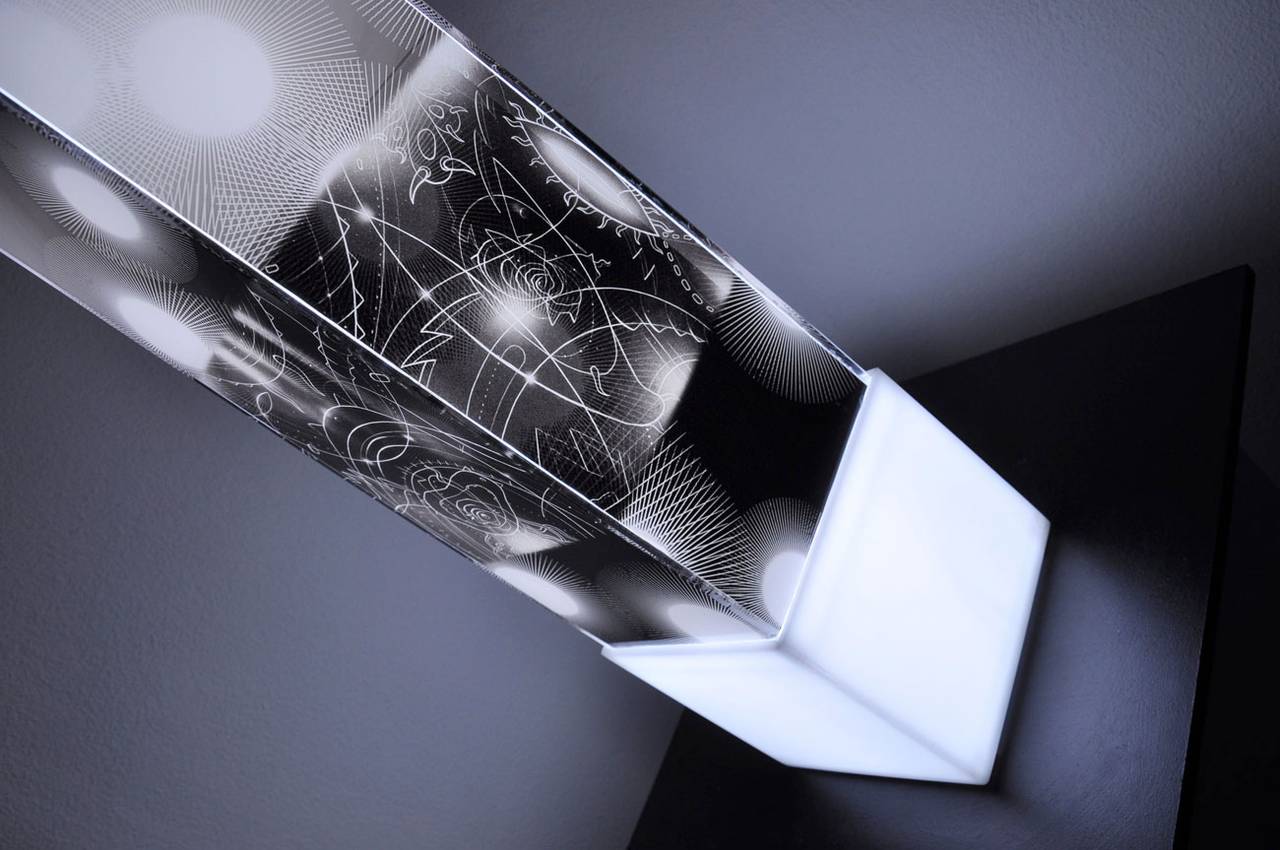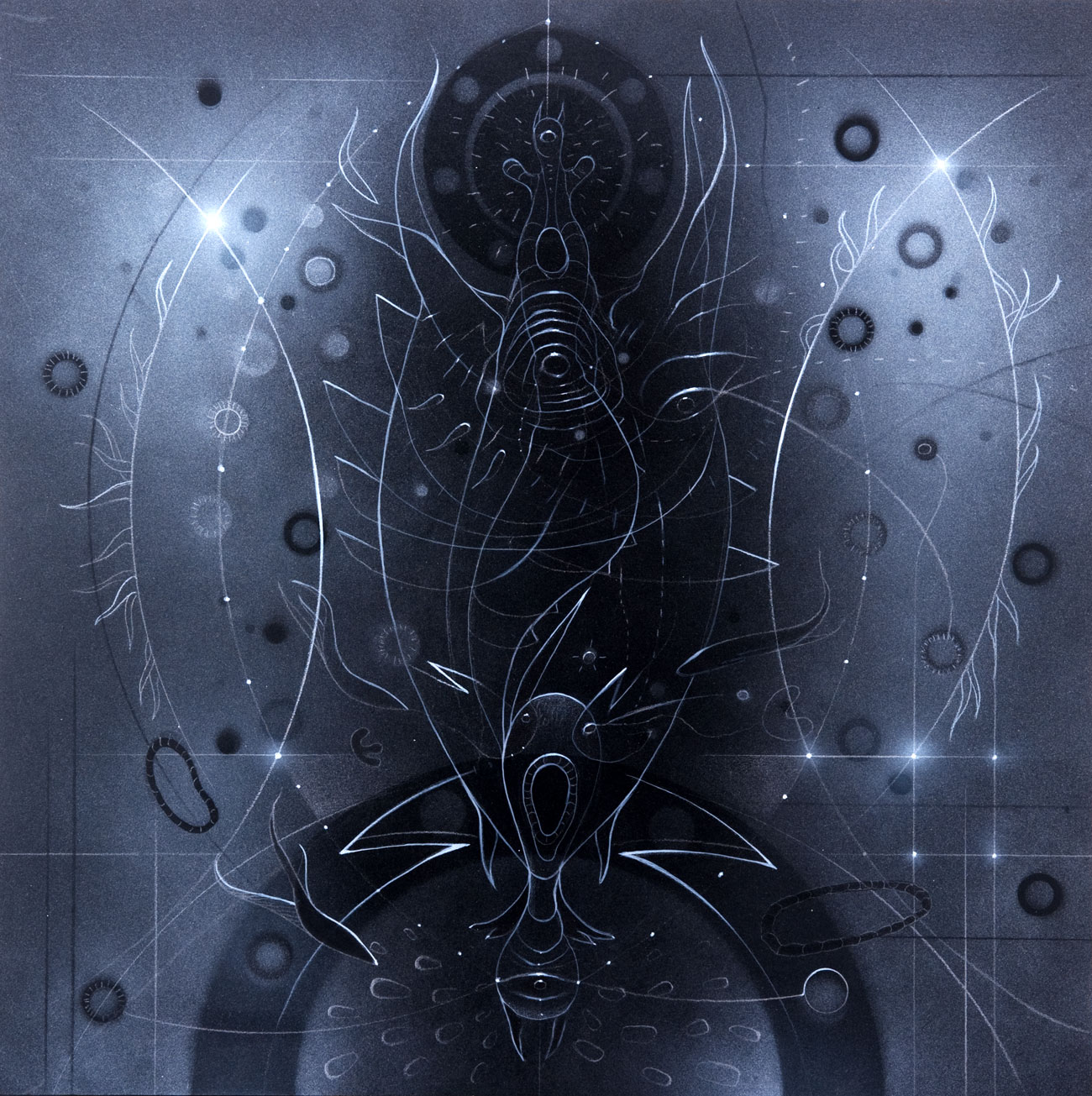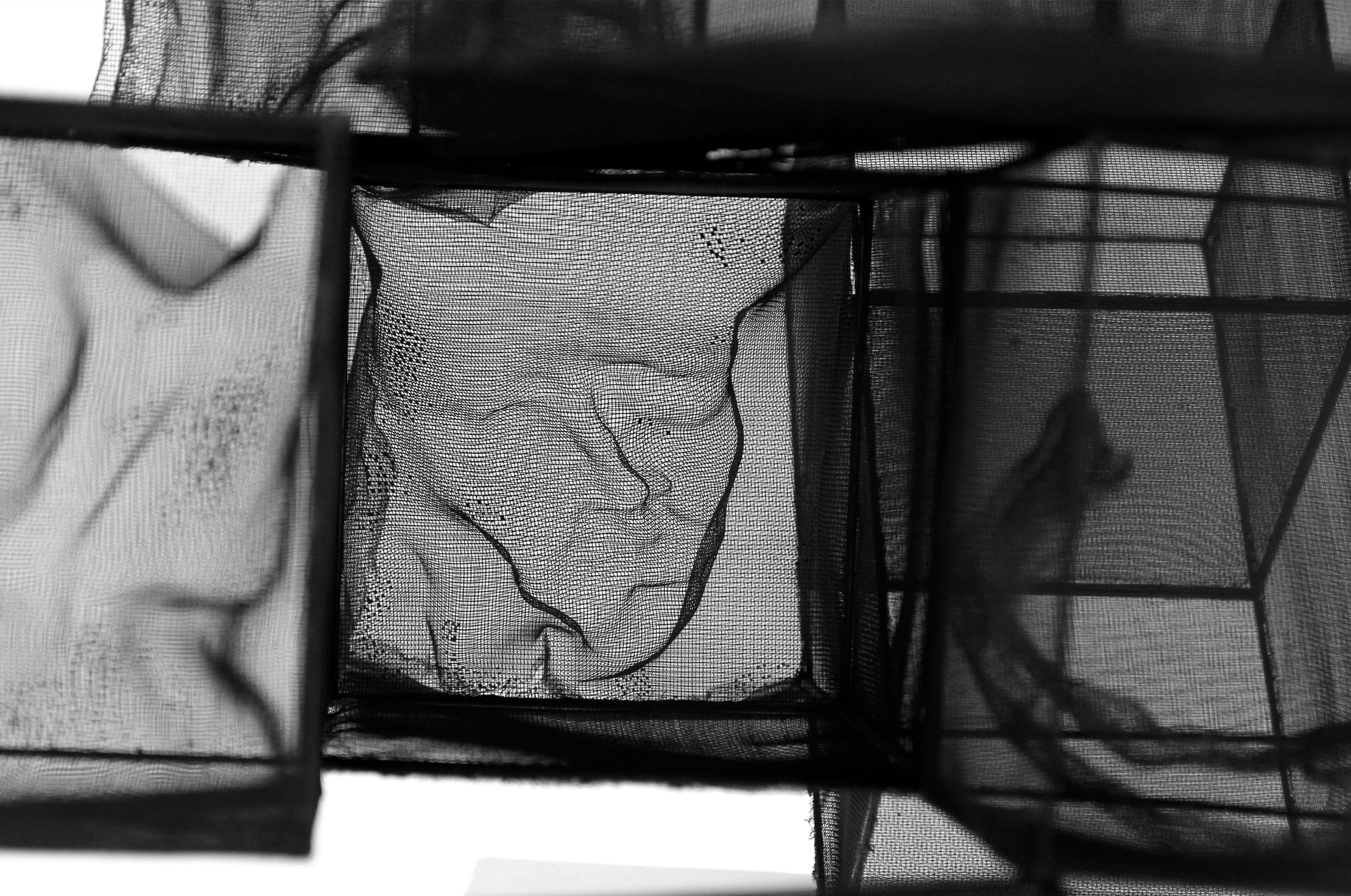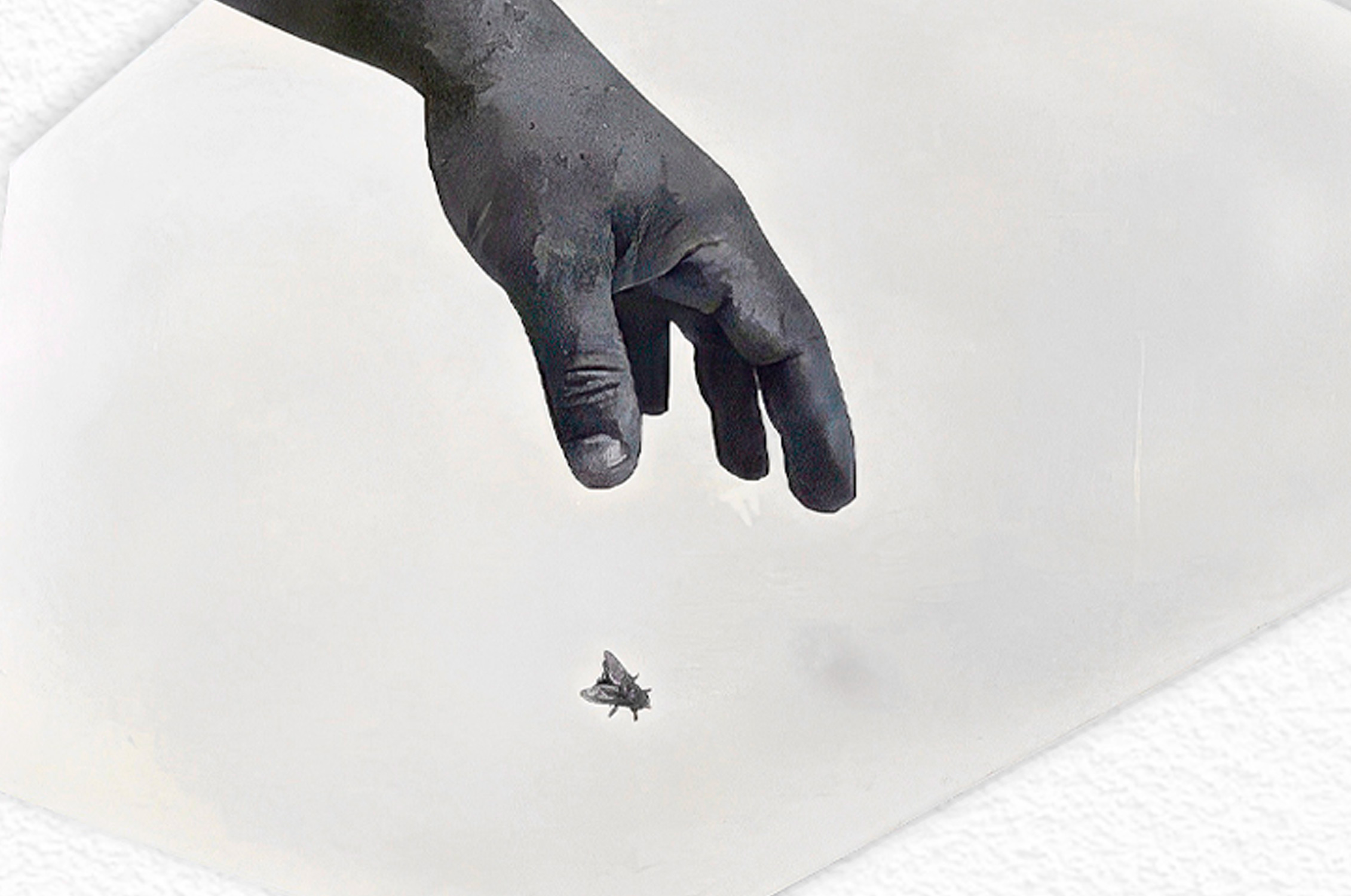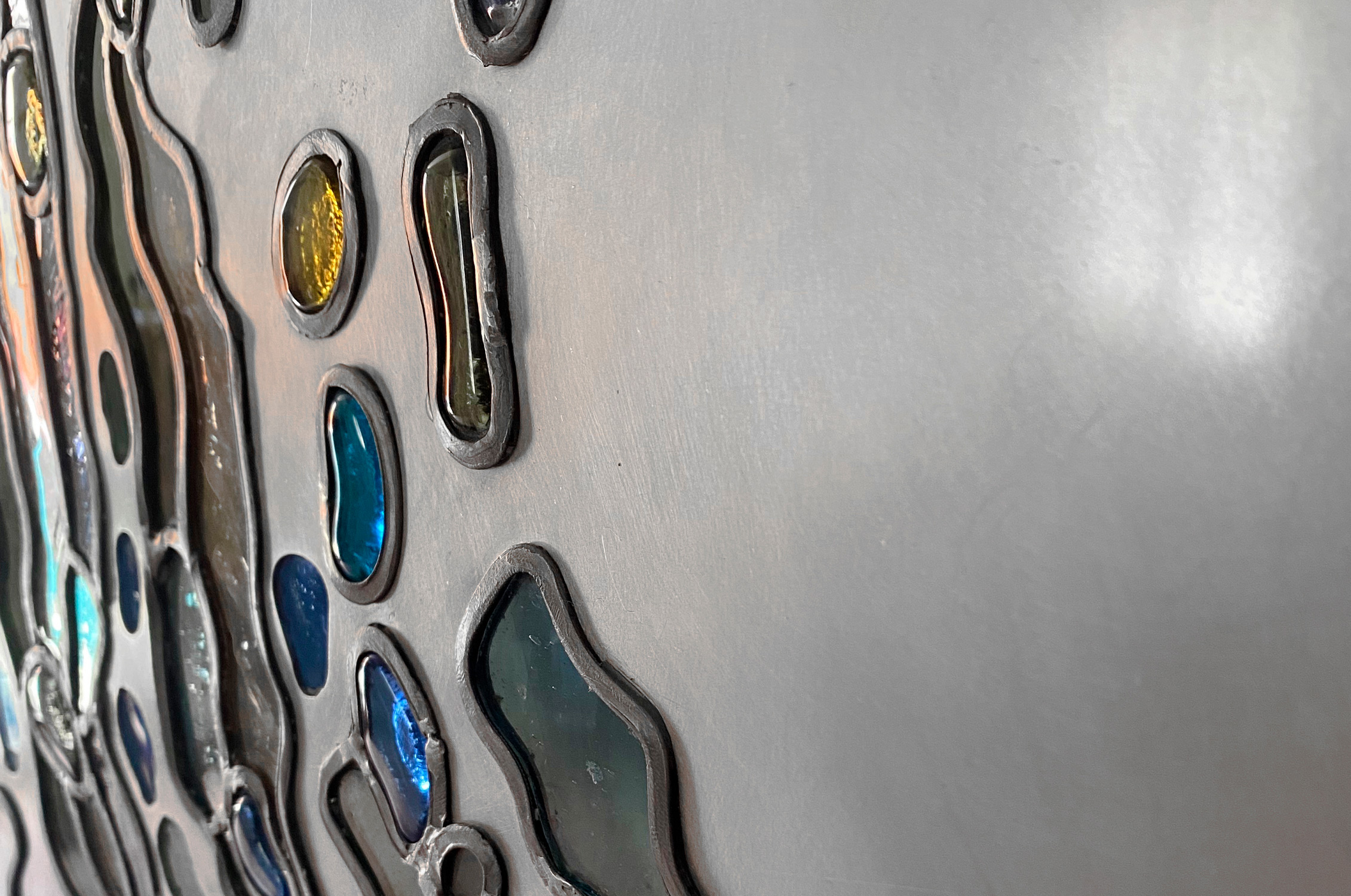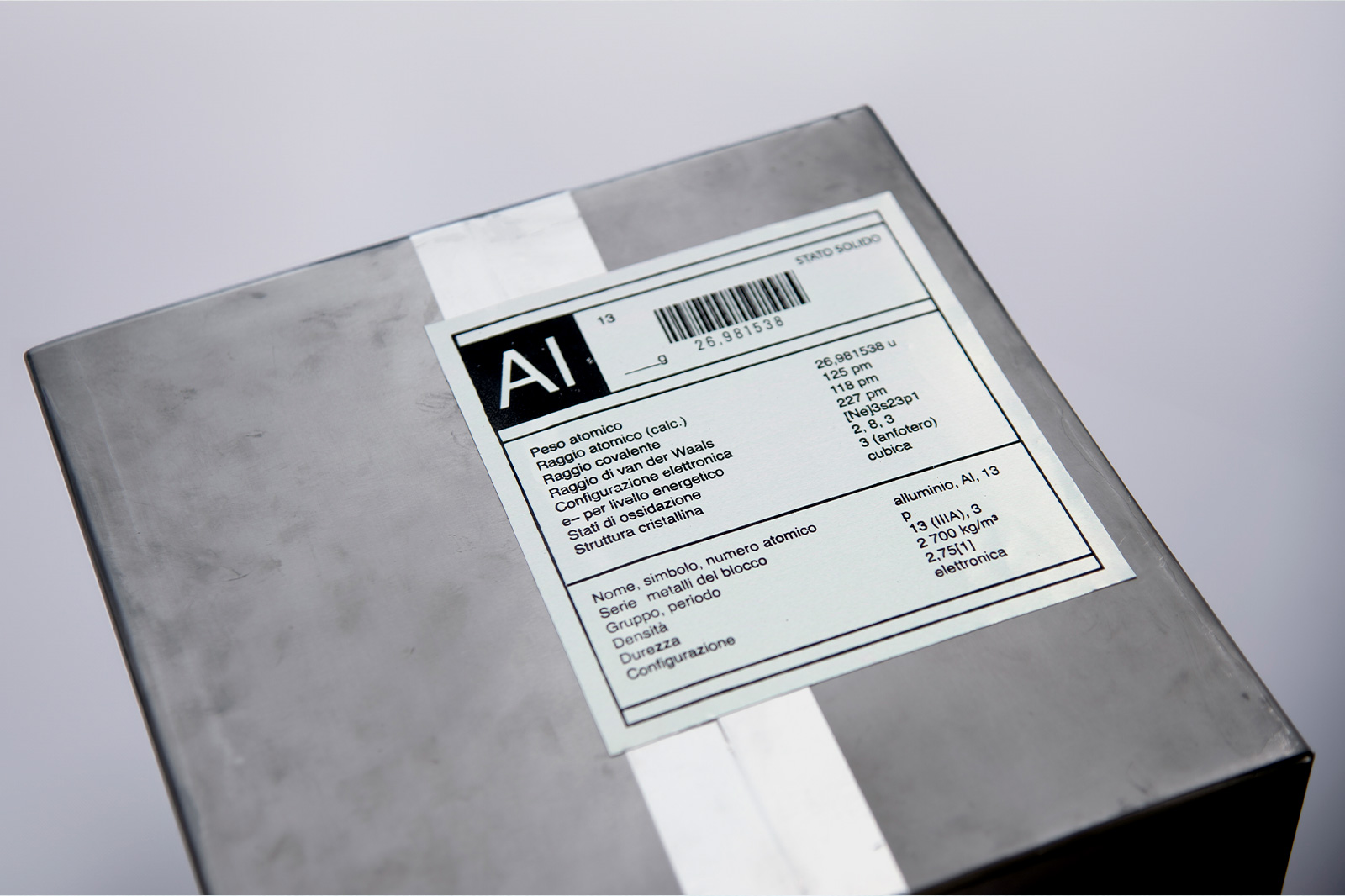COMEL AWARD FINALIST 2018
Interview with Lino di Vinci
di Ilaria Ferri
He is an eclectic artist whose work spans from the techniques of traditional painting to plexiglas light art installations. In recent years, the work as Art Designer is pursued in parallel with his artistic journey,blurring the line between the two worlds and shortening the distance between art and everyday life.
You participated in the VII edition of the COMEL Award, Harmonies in Aluminum, with the artwork Metalcromie, tell us about your experience. Is aluminum a metal you normally use? How did your choice fall on this particular work?
I heard about the Award through word of mouth among artists, and I signed up. It was a nice experience. The level of the works exhibited and of the artists was very high and obviously this was an the advantage for all the participants. I really liked the initiative that promotes those who use such a particular material, because I believe it is very difficult to value this type of work as it deserves. The exhibition venue is also very beautiful, I was very impressed by the friendly atmosphere and the welcome given by the organizers, because there was no atmosphere of snobbery as it is sometimes found in various exhibition situations. So, also from the human point of view, it was a good experience. The choice of the “Metalcromie” diptych was related to the game of chromaticism and circular shapes that I often use in my work as a synonym of harmony, movement and lightness. Being more a painter than a sculptor, I do not use metal in its three-dimensionality, but dealing with this specular surface, playing on the great potential of its aesthetic effects and its iridescent reflections, I like people who observe the work through these, find themselves inside it , in a game of deceptive and seductive specularity.
Your works are populated by beings and signs that refer to oriental myths and legends, from the kappa of the ponds to the kodama of the trees, and to the various spirits that characterize the ancient oral tradition of Northern Europe. At the same time there is a strong tension towards the sidereal spaces, the distant worlds, alien living forms can be found even in the titles of some works, and also series and exhibitions evoke these features (Sidereal Reflections, The Invaders, Lifeforms, Univers Suspendus). Where do you get the inspiration and knowledge of these worlds far away in time and space? What influenced these choices?
The artists are like sponges, and they are obviously influenced by everything they see, I really like the illustrations, the comic strip, the cinema, the Japanese culture, several of my black and white works, for example, rework a lot both the Japanese comics aesthetics and the great oriental mystical tradition of pure black and white. All these things come into a kind of blender (my brain, my belly) and are then retranslated in my works, in an aesthetic-communicative function. My research on visual languages is not always immediately understandable, but it is fundamental for me: intersections and contaminations between illustration, comics, cinema and art are the basis of my works. We live in a constant bombing of images of all kinds and art can serve to make us stop for a moment to reflect and “feel”, trying to put some harmonious order and poetry in this constant chaos. Often visiting exhibitions in Italy and abroad, I was unconsciously fascinated by fantastic and indefinable, but above all mysterious forms. The more mysterious some images are, and the more they urge us to try to grasp their meaning, the more elusive they are and the more they attract us and I make a working tool out of this. In my Paris atelier open to the public, I am directly experiencing this kind of immediate fascination at the level of communication with the observer. In Paris I often visit the museum of ethnographic art Quai Branly Chirac, and every time I am amazed by the “energetic impact” of sculptures, decorations, totems of exotic worlds, I feel pervaded by this magic and in recent years I think I have retranslated into my works the ancestral vibrations received in this incredible museum. From a visual point of view, because as a matter of fact, I was inspired by some anthropomorphic forms, never too recognizable and defined, that fascinate me a lot; and to geometric decorative motifs, because even in geometry there is an absolute formal mystery that attracts. I do not like Art that is defined in an unequivocal way, I give inputs to the observer and I like him to complete the work of art with his own free interpretation. In this sense, I see the analogies between visual art and music: even if you cannot understand the most hidden meaning in music, the listener is pervaded by the well-being and the aesthetic pleasure that comes from listening to it. I try to work this way, and when the spark comes alive with people and they remain deeply attracted by my work (in Paris this happens more often with women who have a more acute sensitivity and a greater willingness to get in touch with it), I am happy and I feel I have reached my goal, which is basically to communicate and share my personal vision of the world.
The art critic Vania Conti states that your works express “a metropolitan hubbub imploded in a vortex of silences”, where the metropolitan noise belongs to a post-industrialized West and the silences to the ancient millennial tradition. So in your “world” West and East meet as if you wanted to merge a scientific and sci-fi side with a dreamlike and fantastic one, made of ancient legends but also turned toward the future, to space, to knowledge. How do you reconcile these two souls inside you, but above all in your works?
The text by Vania Conti refers precisely to large metal paintings; I used a black roller to describe great “imaginary calligraphies”, similar to the Eastern tradition, using primary materials: black enamels and water. Therefore a more original aspect and a more archetypal way of painting on surfaces that are instead extremely modern like metal. In this way I merged, as I always do, something handmade with modernity. I like to start from the primary gesture of handmade drawing, because that’s what gives warmth to the most modern means. In the light works, I use both the metal and the led lights, I could do everything directly on the computer and I like that it creates a bit of a misunderstanding, everything seems to be done with this, but instead I always start with my hand, heart, belly and head. This is exactly what comes to the observer, if my works were all completely technological they would never reach such depths.
Speaking of techniques, you graduated in Painting at the Ligustica Academy of Fine Art in Genoa and then you decided to experiment using always different tools and supports (paper, canvas, wood, video, metal, pvc, plexiglas). How did the transition from the most classic canvas techniques to the creation of design objects happen? Even the use of colors has become polarized in “black and white” works and very colorful works, and you have continued to pursue these two inclinations. How are these two ways reconciled, are there moments in which you prefer one rather than the other ? What relationship is there in your works between art and design?
I started with the great abstract artists of the ‘900: Klee, Kandinsky, Matta, Wols, my artistic fathers, but I had immediately to abandon them in order to find my own language, but they made me understand all the freedom that can be found in making art in large spaces. The transition from classical to more modern techniques took place naturally, because I was always very curious to experiment with different things. I do not like to sit on a situation, which may also work on a commercial level, because I would be bored and I would not even be able to create anymore. So this curiosity, from the Academy onwards, has led me to learn new techniques and to experiment the use of several different materials, without this playful component of my job, I would never be able to express myself artistically. Art and design in my case intersect very much. One of my “design” objects comes out with an artistic approach linked to instinct that is then led back to design and that is then expressed in an object that, however, I would like to underline, is always a unique piece. I recognize and claim an aesthetic-decorative component in part of my work, which makes it natural for me to “flirt” with the aesthetics of the objects I use. I can never decide a style or a type of color, I love them all, for an artist it is not possible to choose, as I believe it works for a musician with musical notes, choosing only some, the result would have too many gaps. There are times when I fall in love with a color, in this period of time ,for example, I am in a “blue phase” and I paint a series of works using this color so tied to the depths of the cosmos and marine universes. I work in a circular way both from a visual point of view, using the circle as a symbol of harmony, contiguity between emptiness and fullness, of the metamorphosis that is in the movement, and also as a work system. As I said, in this period I am in the blue phase, but then, in order not to repeat myself too much, I move on to the bright works and then maybe to the black and white paintings, colored and then continue with the design objects. In the meantime that this circulatory system is accomplished, I have matured as a person, changed (and I hope improved), and when I come back to using blue for example, I do it with the knowledge of what I have learned so far and therefore my work, while maintaining the same root (the invention of absolutely unusual spaces and figures), changes. So for me, circularity becomes a system of work and life, not just a philosophical one.
Alongside your artistic activity, there are also the other ones of object designer and interior designer. In reality these two roads seem to converge more than one could think, as if art could put itself at the service of everyday life, as if this could be a way to get the great public close to art, no longer closed only in galleries and museums, but to live it in their own homes and public places.
It is interesting the idea that one can experience pleasure in observing and touching an object of use. For example adding light, for me it is giving new energy to the object or the paintings. I love using the airbrush because it gives a particular brightness to the paintings giving the feeling that they are kind of turned on, it is from there that my idea of creating luminous objects was born. Freeing the light that vibrated inside the paintings even in objects was a bit like freeing their energy. To Give that light determines moods, it gives a connotation to an environment (hot-cold, etc.), it was exciting for me, in my own small, to determine the elements that defined its aura. Entering a collector or my client’s home and immediately feeling the kind of energy that I managed to give with my works, always gives me great satisfaction, because I feel I have acted on the whole environment not only with a detail. The object therefore has an aesthetic function but, in this case, also a beneficial one and this can be seen as one of my goals, as much as communicating my points of view on art or life. My work is always thoughtful, I keep it out of an objective and social reality, I realize that there are many artists engaged in this sense, and I respect them a lot, but in my personal way of understanding Art, I prefer to create something that comes more into the intimate sphere of people, which makes traveling with the eyes and the mind, which takes you far away, but poses questions through alternative situations and parallel dimensions. A speech that, from a certain point of view, could lead to the recognition of oneself in other contexts, but in a very natural way. References to pop culture allow me to quickly connect with the observer, especially the younger ones, who recognize and appreciate my work very much. This makes me think of being able to enter a popular and communicative language of immediate impact, despite the fact that I use stylistic styles that are anything but simplified, and even if this is an involuntary process, it gives me great pleasure.
You have exhibited in different places, traveling the world and then deciding to have a fixed abode in Genoa and Paris. For what have you been able to observe, how the ways of using art change? What are the differences in organizing exhibitions in the various countries you have visited?
Speaking of art branch professionals, I didn’t see any big difference, because I found the same work methods a bit everywhere. What changes a lot instead is the way of understanding art and the way to propose artists. The French, for example, can see very well that they are children (and someway victims) of Duchamp, in the sense that narration is fundamental for them as well as what concerns the intellectual part and the concept exposed. I wouldn’t want to generalize, but in my experience the way of using art and organizing Italian exhibitions has fewer ideological superstructures, art is used in a very natural way and without too many schemes. In Japan, instead, there is a synthesis of these two inclinations, a more natural acceptance of the works and a great organizational efficiency and practice that is always very respectful of the artists. Being able to understand what the Japanese think in front of your artwork is practically impossible, given their sometimes overly discreet nature. In Arab countries instead they have an iconographic scheme very different from ours, they are used to very sophisticated abstractions, tending to religious mysticism and not to the figure because they sometimes fear it. While we Westerners use it to overturn all points of view and dissect it in any way, it can be a wall for them culturally.
As Luciano Caprile states, your artworks are children of the abstract painting of the last century, in particular they have much to do with artists like Wols, Masson, Michaux and Tobey. You claim to have freed yourself from this type of painting in order to pursue your desire to experiment more freely, to give free rein to imagination and play, while still maintaining the disturbance of the creative act. So how do your paintings come alive? Does the first input come from chaos and develops then as a game (or vice versa) or does it follow a different and unpredictable process each time?
Every time it’s different, I never turn for inspiration to the outside, because for me my work is also an investigation into the deepest part of me, a very chiaroscuro side. Perhaps the artist is a little more exposed than others, but a greater vulnerability can be a possibility, for those like me who work very instinctively. I’m not a conceptual artist, maybe I’m a post romantic, in fact it is the inner emotional turmoil that allows me to give more, to be more communicative since this emotional turmoil arrives and is often appreciated. I am absolutely opposed to art-therapy, to that kind of art wanting to pour on those who observe their problems, their anguish, their state of mind. I think this emotional turmoil, fatal thoughts for what happens in the world and in ourselves, all of them, must be brought back to an aesthetic form, to a cultural point of view, must be referred to one’s own artistic path of communicators and creators of messages and beauty. Clearly the Art needs a fire from which to sparkle, therefore the emotional turmoil is necessary to avoid the aseptic nature of aestheticism or conceptuality as for its own sake. For what it concerns me and my work, the artworks must be born from this emotional turmoil principle, only this way they will be able to reach the public more directly. Sometimes some of these can be a bit scary, others less, but art should never be too reassuring, otherwise what would it be meant to be?

